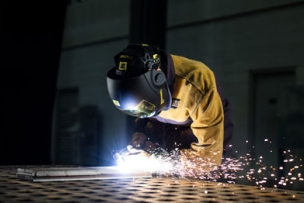An arc flash, for example, is an electrical explosion causing severe burns, injuries, and even death, depending on the severity of the incident, and it can involve temperatures hotter than the sun’s surface. Other burn risks include flash fires or hot spatter from industrial processes.
Work-related fires and explosions—which tend to occur in industries such as chemical manufacturing, utilities, and oil and gas extraction—led to 1,480 workplace injuries and 115 fatalities in 2018.
For workers in these environments, it’s vital to have the right gear to protect you from severe burns and injury.
“With so much attention being paid to COVID-19, employees may forget just how hazardous of a situation that they’re in,” says MCR Safety analyst Anthony Webb.
How Vented FR Shirts Can Lower Body Burn Percentage
MCR Safety’s latest innovation in flame-resistance protection is Summit Breeze technology, which is patented and used exclusively on the company’s flame-resistant (FR) apparel.
It incorporates mesh venting on the back of the shirt and under the arms, ensuring the regulation of body heat and allowing for the expelling of dangerous gases. It also provides better heat stress management for those working in a hot environment or doing labor-intensive tasks.
“Nobody loves wearing FR gear,” says Gina Shaw, national account manager at MCR Safety. “It’s typically hot and heavy, and wearers have to have long sleeves and pants. That’s why we came up with the patented shirt design with the mesh back and underarm vents, which have been shown in testing to reduce burn rates and heat stress.”
Shaw adds that MCR Safety has developed the clothing so that it doesn’t require the use of formaldehyde—a harmful irritant—during the manufacturing process, and that the venting of dangerous gases improves the survivability of the person wearing the gear.
“In the instances of a flash fire or an arc flash, gases need a way to escape one’s clothing, otherwise they move directly up to the closest exit point, which is typically close to the face,” she says.
Indeed, respiratory failure due to gas inhalation is a significant danger in fires. According to the American Burn Institute, inhalation injury increases the mortality rate from a fire injury by 16 times. So directing gases away from the face can help to minimize inhalation injury significantly.





Talk to Us!
Leave a reply
Your email address will not be published. Required fields are marked *